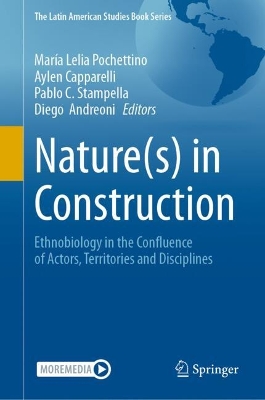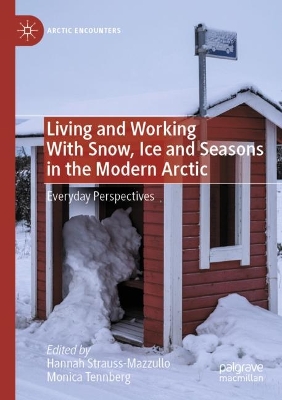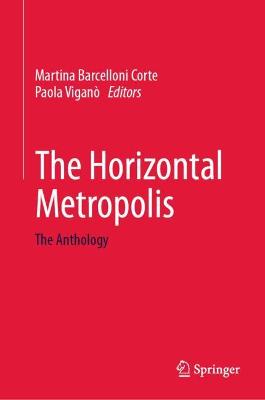Nature(s) in Construction
 portes grátis
portes grátis
Nature(s) in Construction
Ethnobiology in the Confluence of Actors, Territories and Disciplines
Pochettino, Maria Lelia; Stampella, Pablo C.; Capparelli, Aylen; Andreoni, Diego
Springer International Publishing AG
09/2024
570
Dura
9783031605512
15 a 20 dias
Descrição não disponível.
Part 1. Biocultural Diversity and its Construction in Latin America.-Chapter 1. ntroduction: A Review of the State of the Art of Ethnobiology in Argentina and related Latin American Countries.- Chapter 2. Domestication of Species and Landscapes in Mesoamerica.- Chapter 3. Trees in the Conformation of Relational Landscapes in the North of Mendoza (Central Western Argentina) from the Pre-Hispanic Period to the Modern Day.- Chapter4. The Immateriality of Cultivated Plants in the Context of Rio Negro Region (Brazilian Amazon).- Chapter 5. Food Sovereignty: Shared Knowledge and Experiences in Argentine Ethnobiology and Archaeology.- Chapter 6. Local Knowledge, Food, Territory and Biodiversity. Case Studies from Mexico and Brazil .- Chapter 7. Criollos from the "Chaco Humedo Formoseno". Some Aspects of their Ethnomedicine .- Part 2. Methodological Approaches to the Study of Biocultural Diversity .- Chapter 8. Methodological Diversity and Reflexivity in Ethnobiological Research .- Chapter 9. Confessional Narrative of Patriarchal Misconceptions in Ethnobiological Studies of Northern Patagonia .- Chapter 10. Urban Ethnobiology: a Space for Reflection on the Relationships Between People and their Environment in Multicultural Contexts.- Chapter 11. Studies about Environmental Change and Local Knowledge in Latin America .- Chapter 12. Conservation and Identification of Botanical Materials in Ethnobiological Studies .- Chapter 13. Socio-Anthropological Holism and the Origins of French Ethnobotany .- Chapter 14. "We are the Seeds": Formal Teaching of Ethnobiology .- Chapter 15. Dialogues with the Community: Knowledge Exchange from Ethnobiology .- Part 3. The Ethnobotany as a Theoretical and Practical Turning Point between Cultural and Biological Conservation: Valorisation Tools Linking Tradition and Innovation .- Chapter 16. Contributions of Ethnobotanics to the Use and Conservation of Cactaceae Biocultural Heritage in Northwestern Cordoba. Identity Studies, Agro-diversity and Conservation of Traditional Practices .- Chapter 17. Following the footsteps of ethnobiologists in the Andresito Peninsula palmitales. Basic and applied science as indissoluble parts when local actors are involved .- Chapter 18. Development of Meliponiculture in Argentina, Ethnobiology and Melissopalynology as Tools for Progress .- Part 4. Ethnophycology and ethnomycology .- Chapter 19. Ethnophycology and Ethnomycology: Two Fields of Study with Great Potential .- Chapter 20. Women Seaweed Gatherers of Queilen (Chiloe, Chile) .- Chapter 21. Ethnomycology of South-East Mexico .- Part 5. Historical ethnobiology and the meaning of the living beings in the documental sources .- Chapter 22. Research on Historical Ethnobotany carried out by The Laboratory of Ethnobotany from The Argentine Museum of Natural History .- Chapter 23. Plant Complexes and the Importance of Context in Historical Ethnobotany Identifications .- Chapter 24. An Approach to Qom Ethnobotany of the Nineteenth Century based on the Work of Angel Carranza .- Chapter 25. Historical Ethnobotanical Documentation by Means of Images .- Part 6. Pre- and Post-Contact Plant Management: a Temporal Vision about Cultural Elections Related to Plant Modes of Use in Past Conjunctural Contexts .- Chapter 26. Post-conquest Early Changes in Phyto-cultural Systems from the Analysis of Food: a Synthesis for the Argentine Arid Diagonal with Emphasis on the "Gobernacion de Tucuman" -Governorate of Tucuman- .- Chapter 27. Advances in Archaeobotany of Central-Eastern Argentina. Dynamics in the Use of Plants from the Early Holocene to Colonial Times Through the Analysis of Micro and Macro Plant Remains .- Chapter 28. The Trees in the Construction of Landscapes in the Argentine Pampean Region. Changes, Continuities and Resignifications in the "Primera Estancia" of Magdalena (Buenos Aires) .- Chapter 29. Plant Consumption in the Northern Patagonian Archipelago (41-47 degrees S, Chile) since 6000 Years BP to Historical Times: an Integrative Vision through Ceramic Use Residues and Human Dental Calculus .- Part 7. The Archaeofauna and its Narratives .- Chapter 30. Herders and Llamas, Companion Species in the Southern Andes during the Last Three Millenia .- Chapter 31. Taphonomy and Archaeofaunas: Friends with Benefits? .- Chapter 32. Multiple Aproaches for Archaeozoological Studies in Argentina .- Chapter 33. Variations in the Isotopic Niche of South American Camelids. A Vision from Applied Zooarchaeology.
Este título pertence ao(s) assunto(s) indicados(s). Para ver outros títulos clique no assunto desejado.
Ethnobiology;Biocultural diversity;Landscape construction;Archaeobotany;Archaeozoology;Gender and ethnicity;Latin America
Part 1. Biocultural Diversity and its Construction in Latin America.-Chapter 1. ntroduction: A Review of the State of the Art of Ethnobiology in Argentina and related Latin American Countries.- Chapter 2. Domestication of Species and Landscapes in Mesoamerica.- Chapter 3. Trees in the Conformation of Relational Landscapes in the North of Mendoza (Central Western Argentina) from the Pre-Hispanic Period to the Modern Day.- Chapter4. The Immateriality of Cultivated Plants in the Context of Rio Negro Region (Brazilian Amazon).- Chapter 5. Food Sovereignty: Shared Knowledge and Experiences in Argentine Ethnobiology and Archaeology.- Chapter 6. Local Knowledge, Food, Territory and Biodiversity. Case Studies from Mexico and Brazil .- Chapter 7. Criollos from the "Chaco Humedo Formoseno". Some Aspects of their Ethnomedicine .- Part 2. Methodological Approaches to the Study of Biocultural Diversity .- Chapter 8. Methodological Diversity and Reflexivity in Ethnobiological Research .- Chapter 9. Confessional Narrative of Patriarchal Misconceptions in Ethnobiological Studies of Northern Patagonia .- Chapter 10. Urban Ethnobiology: a Space for Reflection on the Relationships Between People and their Environment in Multicultural Contexts.- Chapter 11. Studies about Environmental Change and Local Knowledge in Latin America .- Chapter 12. Conservation and Identification of Botanical Materials in Ethnobiological Studies .- Chapter 13. Socio-Anthropological Holism and the Origins of French Ethnobotany .- Chapter 14. "We are the Seeds": Formal Teaching of Ethnobiology .- Chapter 15. Dialogues with the Community: Knowledge Exchange from Ethnobiology .- Part 3. The Ethnobotany as a Theoretical and Practical Turning Point between Cultural and Biological Conservation: Valorisation Tools Linking Tradition and Innovation .- Chapter 16. Contributions of Ethnobotanics to the Use and Conservation of Cactaceae Biocultural Heritage in Northwestern Cordoba. Identity Studies, Agro-diversity and Conservation of Traditional Practices .- Chapter 17. Following the footsteps of ethnobiologists in the Andresito Peninsula palmitales. Basic and applied science as indissoluble parts when local actors are involved .- Chapter 18. Development of Meliponiculture in Argentina, Ethnobiology and Melissopalynology as Tools for Progress .- Part 4. Ethnophycology and ethnomycology .- Chapter 19. Ethnophycology and Ethnomycology: Two Fields of Study with Great Potential .- Chapter 20. Women Seaweed Gatherers of Queilen (Chiloe, Chile) .- Chapter 21. Ethnomycology of South-East Mexico .- Part 5. Historical ethnobiology and the meaning of the living beings in the documental sources .- Chapter 22. Research on Historical Ethnobotany carried out by The Laboratory of Ethnobotany from The Argentine Museum of Natural History .- Chapter 23. Plant Complexes and the Importance of Context in Historical Ethnobotany Identifications .- Chapter 24. An Approach to Qom Ethnobotany of the Nineteenth Century based on the Work of Angel Carranza .- Chapter 25. Historical Ethnobotanical Documentation by Means of Images .- Part 6. Pre- and Post-Contact Plant Management: a Temporal Vision about Cultural Elections Related to Plant Modes of Use in Past Conjunctural Contexts .- Chapter 26. Post-conquest Early Changes in Phyto-cultural Systems from the Analysis of Food: a Synthesis for the Argentine Arid Diagonal with Emphasis on the "Gobernacion de Tucuman" -Governorate of Tucuman- .- Chapter 27. Advances in Archaeobotany of Central-Eastern Argentina. Dynamics in the Use of Plants from the Early Holocene to Colonial Times Through the Analysis of Micro and Macro Plant Remains .- Chapter 28. The Trees in the Construction of Landscapes in the Argentine Pampean Region. Changes, Continuities and Resignifications in the "Primera Estancia" of Magdalena (Buenos Aires) .- Chapter 29. Plant Consumption in the Northern Patagonian Archipelago (41-47 degrees S, Chile) since 6000 Years BP to Historical Times: an Integrative Vision through Ceramic Use Residues and Human Dental Calculus .- Part 7. The Archaeofauna and its Narratives .- Chapter 30. Herders and Llamas, Companion Species in the Southern Andes during the Last Three Millenia .- Chapter 31. Taphonomy and Archaeofaunas: Friends with Benefits? .- Chapter 32. Multiple Aproaches for Archaeozoological Studies in Argentina .- Chapter 33. Variations in the Isotopic Niche of South American Camelids. A Vision from Applied Zooarchaeology.
Este título pertence ao(s) assunto(s) indicados(s). Para ver outros títulos clique no assunto desejado.







